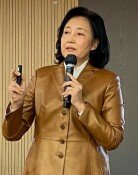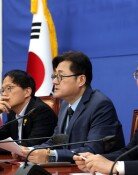N. Korea must make bold decisions for CVID
N. Korea must make bold decisions for CVID
Posted June. 09, 2018 07:35,
Updated June. 09, 2018 07:35
We are now only three days away from the maiden U.S.-North Korea summit, but it appears that the two sides have yet reached an agreement at working-level talks on the idea of “complete, verifiable and irreversible denuclearization.” U.S. President Donald Trump said Thursday, “We could sign an agreement (to end the war).” “But that’s really the beginning. That’s probably the easy part. The hard part remains after that.” U.S. Secretary of State Mike Pompeo also said that he was “hopeful that Chairman Kim Jong Un is prepared to make that decision (for CVID) for his country,” indicating that the two sides have yet to succeed in seeing eye-to-eye on the denuclearization method.
Thus, though Washington and Pyongyang seem to have mostly agreed to declare the end of the war by taking a symbolic step to guarantee the regime’s safety, it is apparently up to Trump and Kim to hash out differences on key items such as the timeline of denuclearization and transfer of nuclear weapons abroad. This may be why Trump has returned to a carrot and stick approach. “If you hear me saying we’re going to use ‘maximum pressure,’ you’ll know the negotiation did not do well, frankly. We have a list of over 300 massive, in some cases, sanctions to put on North Korea,” he said. The U.S. president also repeatedly said that he was willing to walk away from the negotiations if they don’t do well.
Incentives were also suggested. Trump said that he may invite Kim to the White House if the summit goes well. “Normalizing relations is something that I would expect to do, I would hope to do, when everything is complete.” Pompeo mentioned about submitting a document that the U.S. Congress would have a say in, so that the North can have comfort in terms of their security even if administrations change in the future. He also stressed that many countries including Japan, South Korea and China will take part in providing economic assistance to the North once the summit succeeds.
Now, a path to a brighter future has been presented to the young leader of North Korea through which his country can get its security guaranteed, normalize ties with Washington and receive economic support. Yet, Kim is still sticking to the obsolete method of “phased denuclearization” of the Korean Peninsula, not providing a definite response to the method of CVID. If the North Korean leader is thinking of using old tactics yet again to “buy time with denuclearization talks while hiding nuclear weapons to build the economy,” it will turn out to be his worst choice that brings isolation and self-destruction to the country.
President Trump should also be cautious in possibly declaring the end of the war when an agreement has yet to be reached on complete denuclearization. It is not appropriate for the United States and North Korea to declare the end of the war without South Korea, and the announcement is likely to cause side effects as a clear roadmap for a peace treaty has not been prepared.







